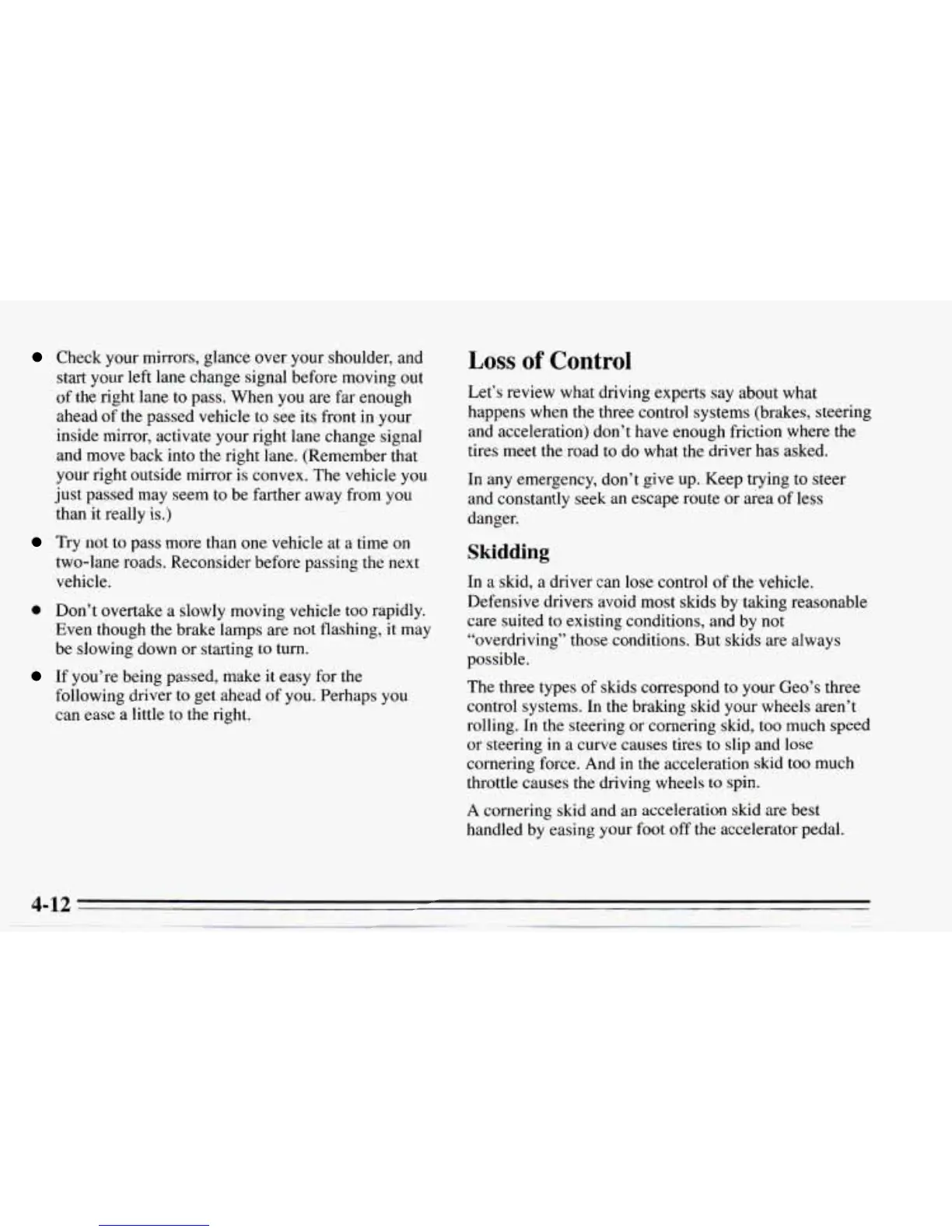Check your mirrors, glance over
your
shoulder, and
start your left lane change signal before moving out
of the right lane to pass. When you are far enough
ahead
of
the passed vehicle to see its front in your
inside mirror, activate your right lane change signal
and move back into the right lane. (Remember that
your right outside mirror is convex. The vehicle
you
just passed may seem to be farther away from you
than it really is.)
Try not to pass more than
one
vehicle at a time on
two-lane roads. Reconsider before passing the
next
vehicle.
0
Don’t overtake
a
slowly moving vehicle too rapidly.
Even though the brake lamps are not flashing, it may
be slowing down
or
starting to turn.
following driver to get ahead
of
you. Perhaps
you
can ease a little
to
the right.
If you’re being passed, make it easy for the
Loss
of
Control
Let’s review what driving experts say about what
happens when the three control systems (brakes, steering
and acceleration) don’t have enough friction where the
tires meet the road to do what the driver has asked.
In any emergency, don’t give up. Keep trying to steer
and constantly seek an escape route or area
of
less
danger.
Skidding
In a skid,
a
driver can
lose
control of the vehicle.
Defensive drivers avoid most skids by taking reasonable
care suited to existing conditions, and by not
“overdriving” those conditions. But skids are always
possible.
The three types
of
skids correspond to your Geo’s three
control systems. In the braking skid your wheels aren’t
rolling. In the steering or cornering skid, too much speed
or steering in a curve causes tires to slip
and
lose
cornering force. And in the acceleration skid too much
throttle causes the driving wheels to spin.
A
cornering skid and an acceleration skid are best
handled by easing your foot off the accelerator pedal.
